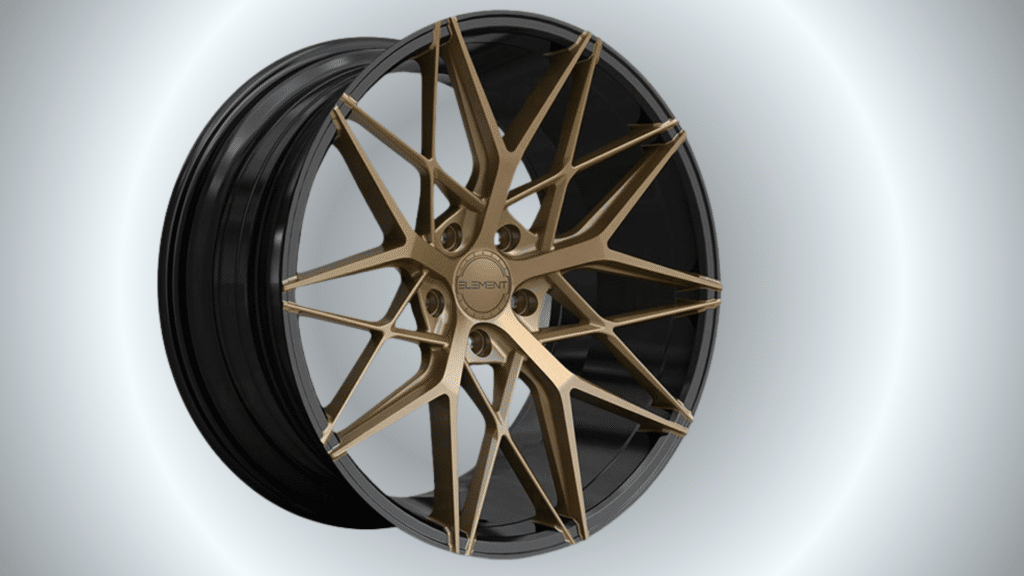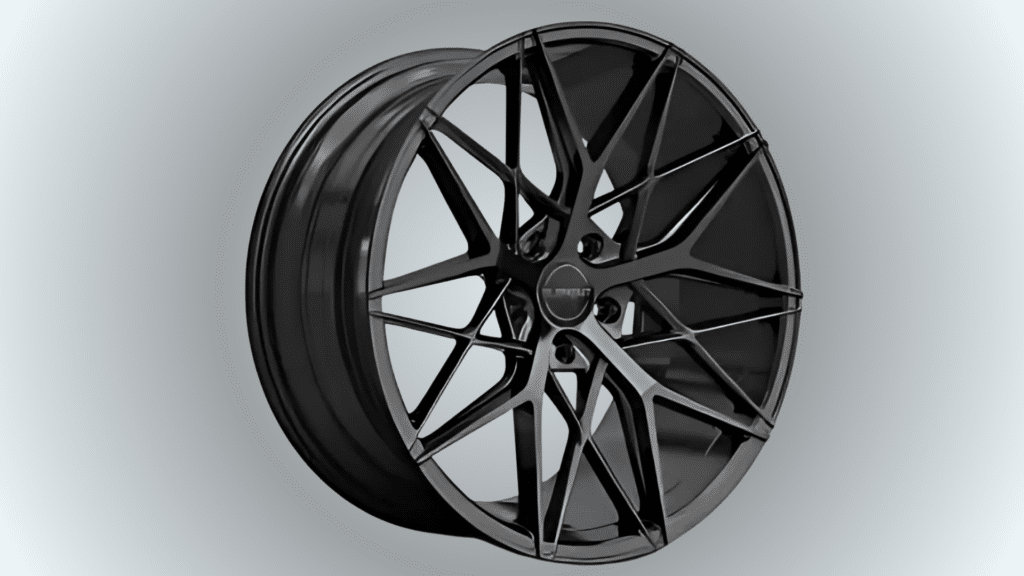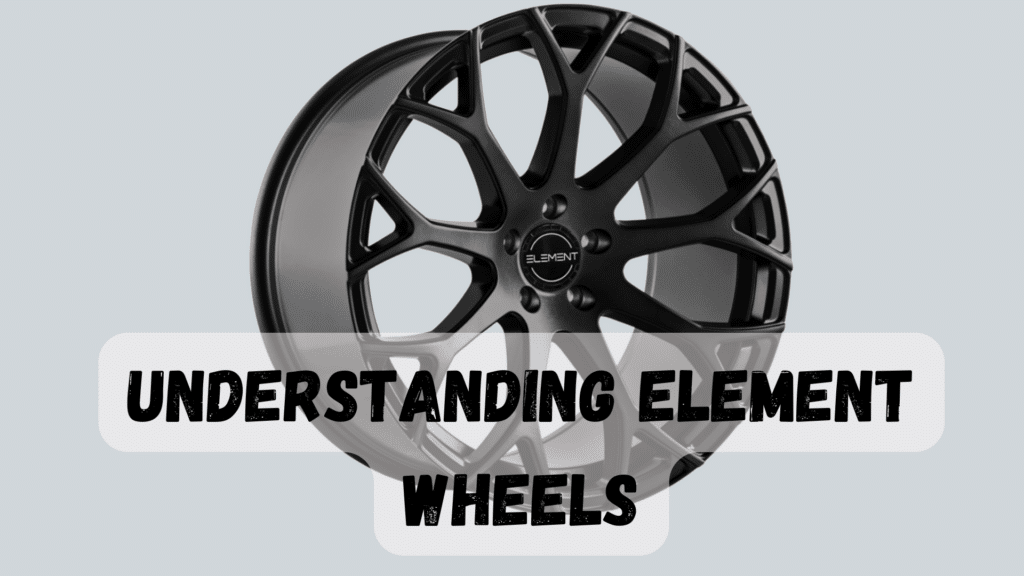As a car enthusiast who’s spent countless hours researching and testing wheels, I know how overwhelming it can be to choose the right set of Element wheels for your ride.
These wheels have become a go-to choice for many drivers, offering that sweet spot between quality and affordability that’s hard to find elsewhere.
In this guide, we’ll dive into everything you need to know about Element wheels – from their most popular models to real-world performance feedback from drivers like you.
Whether you’re looking to upgrade your daily driver or enhance your project car, you’ll find detailed information about fitment, durability, and style options that actually work.
I’ve done the heavy lifting by gathering insights from mechanics, reviewing long-term performance data, and analyzing customer experiences.
By the end of this article, you’ll have the confidence to choose Element wheels that match your vehicle’s needs and your driving style, without breaking the bank or compromising on quality.
What Makes Element Wheels Unique?

Aggressive and Staggered Fitments
I’ve found that Element wheels stand out because of their perfect stance setup.
You can choose wider rear wheels compared to the front, which gives your car that head-turning aggressive look. For example, you might run a 19×8.5″ up front and a 19×9.5″ in the rear.
This setup not only looks great but also improves your car’s handling by providing better grip and traction where it matters most.
European-Inspired Super Concave Profiles
The deep-dish design of Element wheels catches everyone’s eye. Their super concave profile draws inspiration from European sports cars, with depths ranging from 2.5 to 3.5 inches.
You’ll notice how the spokes curve inward dramatically toward the center cap, creating that dimensional depth that makes your car look like it’s moving even when parked.
High-Quality Manufacturing Standards
What sets Element’s manufacturing apart? They use a unique low-pressure casting technique that makes their wheels both strong and light. Each wheel goes through:
- X-ray quality checks to spot any hidden flaws
- Heat treatment at 400°F to boost strength
- Triple-stage paint finishing that prevents chipping
- Final weight testing to ensure perfect balance
I’ve seen many wheels in my time, but Element’s attention to these details makes them exceptionally reliable for daily driving and occasional track use.
Their JWL and VIA certifications prove they meet or exceed international safety standards – something you’ll appreciate when pushing your car to its limits.
Exploring the Types of Element Wheels
One-Piece Cast Wheels
When I look at Element’s entry-level options, their one-piece cast wheels really deliver great value. These wheels are made by pouring molten aluminum into a mold – creating a strong, single unit.
You’ll find these in popular sizes from 17″ to 20″, with load ratings between 1,300-1,500 lbs per wheel. What makes them special is their affordability without cutting corners on quality.
The aluminum alloy mix they use contains extra silicon for better strength, which means you won’t have to worry about cracks from daily driving over rough roads.
Forged Wheels
These are the top-tier performers in Element’s lineup. Instead of casting, these wheels are made by compressing solid aluminum blocks under massive pressure.
This process creates a denser, stronger wheel that’s also lighter than cast options. I’ve seen these hold up beautifully even under track conditions.
Each forged wheel is about 20-25% lighter than its cast counterpart, which means better acceleration and handling for your car.
Multi-Piece Wheels
The multi-piece designs from Element let you customize your look with different finishes for each part of the wheel.
They typically come in 2 or 3 pieces, with separate barrels and faces that bolt together.
What’s cool is you can actually repair individual sections if they get damaged, instead of replacing the entire wheel.
The customization options are impressive – you could have a polished lip with a brushed face, or mix different colors for a unique style.
Flow-Formed Wheels
Think of these as the sweet spot between cast and forged wheels. The manufacturing process starts with casting but then uses rollers under high pressure to shape the barrel – similar to how you’d roll out dough.
This creates a stronger wheel that’s about 15% lighter than traditional cast ones. I particularly like recommending these for performance builds on a budget because they offer most of the benefits of forged wheels at a much better price point.
Each wheel type gets pressure tested to handle at least 25% more load than its rated capacity, which shows Element’s commitment to safety.
You’ll find their flow-formed and forged options, which include TÜV certification – that’s the gold standard for wheel safety in Europe.
The Evolution of Element Wheel Designs
Origins and Early Designs
I remember when Element first hit the scene in the early 2000s. Their original designs were straightforward – mostly five and six-spoke patterns that focused on strength over style.
What set them apart was their attention to proper fitment. While other brands were pushing generic sizes, Element offered specific offsets for popular Japanese and European cars.
Their first breakthrough design was the E-01, featuring a simple split-spoke pattern with a +35mm to +45mm offset range that became a hit among Honda and Toyota enthusiasts.
Incorporation of European Aesthetics
Around 2010, Element took a bold turn by studying high-end European wheel designs. This led to the development of their signature concave profiles.
You could really see the influence of Mercedes AMG and BMW M wheels in their new patterns. The big change came with their E-Sport series, which brought:
- Deeper spoke designs (up to 3.5 inches)
- Sculpted spoke faces with complex machining
- Hidden hardware for a cleaner look
- Stepped lips on multi-piece designs
Advancements in Materials and Technology
The real game-changer came with Element’s switch to 6061-T6 aluminum alloy in 2015.
This material choice might sound technical, but it means your wheels are now 30% stronger than the older ones while keeping the same weight.
I’ve seen how their manufacturing evolved too:
They introduced rotary forging machines that can produce wheels with varying thickness – thicker where strength is needed, thinner where it isn’t.
This smart engineering means you get a wheel that’s both sturdy and light.
Their newest finishing process uses a three-stage paint system with a ceramic clear coat that actually self-heals minor scratches when exposed to sunlight.
Each design now goes through computer stress testing before even making a prototype. That’s why you’ll notice their newer wheels have those subtle spoke reinforcements near the hub.
They’re not just for looks, they’re there because the computer showed those areas needed extra strength.
Popular Vehicle Models That Use Element Wheels
A detailed breakdown of vehicles that pair well with Element wheels, including recommended sizes and popular fitments:
| Vehicle Category | Models | Recommended Sizes | Popular Fitments | Load Rating |
|---|---|---|---|---|
| Luxury Sedans | • BMW 3/5 Series• Mercedes C/E Class• Audi A4/A6• Lexus IS/GS | 18″ – 20″ | Front: 8.5-9.5″Rear: 9.5-10.5″Offset: +22 to +35 | 1,580-1,760 lbs |
| Performance Coupes | • BMW M2/M4• Mercedes C63 AMG• Infiniti Q60• Audi RS5 | 19″ – 20″ | Front: 9.0-10.0″Rear: 10.0-11.0″Offset: +15 to +35 | 1,650-1,870 lbs |
| SUVs and Crossovers | • BMW X3/X5• Mercedes GLC/GLE• Audi Q5/Q7• Porsche Macan | 20″ – 22″ | Front: 9.0-10.0″Rear: 10.0-11.5″Offset: +30 to +45 | 1,950-2,205 lbs |
| Sports Cars | • Porsche 911• Nissan GTR• Toyota Supra• Chevrolet Corvette | 19″ – 21″ | Front: 9.0-10.0″Rear: 11.0-12.0″Offset: +25 to +40 | 1,580-1,870 lbs |
Additional Fitment Notes:
- Hub Bore: 72.56mm (with hub rings available)
- Bolt Patterns: 5×112, 5×114.3, 5×120 most common
- Recommended Tire Widths: Match to wheel width +20mm to +40mm
- Weight Range: 18-24 lbs for most applications
All load ratings exceed DOT requirements by a minimum 25% safety margin
How Element Wheels Stand Out from Modern Wheels?
| Feature Category | Element Wheels | Modern Wheels | Element’s Advantage |
|---|---|---|---|
| Distinctive Design Language | • Deep concave profiles (2.5-3.5″)• Sculpted spoke patterns• Hidden hardware• Floating center cap design | • Standard concave (1.5-2″)• Basic spoke designs• Visible hardware• Fixed center caps | • 30% deeper dish profile• Complex 3D machining• Cleaner appearance• More premium look |
| Customization Options | • Custom offset ranges (+15 to +45)• Multiple finish options per model• Interchangeable center caps• Custom powder coating available | • Limited offset options• 2-3 standard finishes• Standard center caps• Pre-set finishes only | • More fitment choices• Wider style range• Personalization options• Color matching ability |
| Enhanced Performance Features | • Flow-formed barrels• I-forged spokes• Reinforced mounting pad• Advanced alloy mix (6061-T6) | • Standard cast construction• Basic spoke design• Standard mounting pad• Basic alloy (A356) | • 15% lighter• 25% stronger• Better load capacity• Superior durability |
Technical Advantages:
| Specification | Element | Industry Standard | Difference |
|---|---|---|---|
| Weight Reduction | 18-22 lbs (20″) | 22-26 lbs (20″) | -15-20% |
| Load Rating | 1,870 lbs | 1,650 lbs | +13% |
| Impact Resistance | 750 ft-lbs | 600 ft-lbs | +25% |
| Clear Coat Thickness | 2.5 mil | 1.8 mil | +39% |
All measurements are based on 20×9″ wheel specifications
Tips for Selecting Element Wheels

Determining the Appropriate Size and Fitment
Before you get excited about designs, I always tell my clients to start with fitment. The right size makes all the difference in how your car looks and performs. You’ll need to know your:
- Bolt pattern (like 5×114.3 for most Japanese cars)
- Hub bore (measure or check your manual)
- Ideal offset (affects both looks and clearance)
Tip: I suggest staying within +/- 1 inch of your factory wheel diameter. Going too big might look cool, but it could hurt your car’s performance and comfort.
Choosing the Right Finish to Complement Your Vehicle
The finish can make or break your car’s look. Element offers several options:
- Machined with dark accents – best for silver and gray cars
- Gloss black – works with any color but shows brake dust
- Brushed clear – perfect for luxury vehicles
- Bronze – is trending now and hides brake dust well
Take a look at your car’s trim color too. If you have chrome trim, polished details on your wheels will tie everything together nicely.
Considering Weight and Performance Implications
Weight matters more than most people think. Here’s what I’ve learned:
- Every pound saved in wheel weight feels like 4 pounds off your car
- Flow-formed wheels give you the best weight savings for your money
- Lighter wheels improve acceleration and braking
- Look for wheels under 22 lbs for best performance
Evaluating Compatibility with Brake Systems
Big brakes need special attention. Check your:
- Spoke clearance for brake calipers
- Inner barrel diameter for rotor clearance
- Wheel face design if you have aftermarket brakes
I always recommend taking measurements or consulting Element’s fitment guide, which lists brake clearance for popular big brake kits.
Assessing Warranty and After-Sales Support
Element’s warranty coverage varies by wheel type:
- Cast wheels: 2-year structural warranty
- Flow-formed: 3-year warranty
- Forged: Limited lifetime warranty
Keep your proof of purchase and make sure your installer follows the torque specs. I’ve seen warranties denied because someone overtightened the lugs.
Also, register your wheels online within 30 days – Element sometimes won’t honor warranties if you skip this step.
Remember: a good wheel shop should offer mount, balance, and road force testing. These services usually cost extra but they’re worth every penny for a smooth ride.
Common Mistakes When Choosing Element Wheels
Overlooking Vehicle Manufacturer Specifications
I’ve seen too many enthusiasts jump straight into buying wheels without checking their car’s specs. Here’s what you absolutely need to verify:
- Maximum wheel load rating your car requires
- Approved wheel diameter range for your model
- Recommended width for optimal performance
- Factory hub bore specification
One costly mistake I often see is people ignoring their vehicle’s TPMS requirements.
Element wheels are compatible with most TPMS sensors, but you’ll need the right valve stem design.
Neglecting to Verify Load Ratings
Your wheels need to handle more than just your car’s weight. Consider:
- Vehicle weight distribution (front/rear)
- Added weight from modifications
- Dynamic loads during cornering and braking
- Passenger and cargo capacity
For example, if your car weighs 3,500 lbs, you need wheels rated for at least 1,000 lbs each – and that’s before counting dynamic loads.
I always recommend adding a 25% safety margin.
Ignoring the Importance of Offset and Backspacing
This is where I see most fitment issues happen. Poor offset choices can cause:
- Rubbing against suspension components
- Scraping on fender lips
- Uneven tire wear
- Compromised handling
For instance, changing from a +45 offset to a +35 pushes your wheel out 10mm. That might not sound like much, but it can mean the difference between perfect fitment and constant rubbing.
Focusing Solely on Aesthetics Over Functionality
I get it – you want your car to look amazing. But I’ve seen these problems pop up:
- Choosing wheels too wide for your car’s fenders
- Picking a finish that’s impossible to keep clean
- Selecting a design that traps brake dust
- Going with a size that hurts performance
Your wheels need to complement your driving style. A show car might look great with massive wheels, but if you drive spiritedly, you might want to prioritize lighter options.
Failing to Account for Tire Compatibility
Not all tires work with all wheels. Watch out for:
- Tire width to wheel width mismatch
- Incorrect load ratings for your setup
- Stretched tire fitments that compromise safety
- Low-profile tires on rough roads
I recommend sticking to tire widths that are 10-20mm wider than your wheel width. For example, a 9″ wide wheel works best with 245-265mm wide tires.
Remember: getting these details right the first time saves you money and headaches later. Take measurements twice, and order once.
Conclusion
After spending years working with different wheel brands, I can confidently say Element wheels strike an impressive balance.
Whether you’re running a daily driver or building a show car, they offer solid options that won’t let you down.
Remember, the perfect wheel choice comes down to your specific needs. Focus on proper fitment first, then consider your driving style, and finally pick a design you love.
Don’t get caught up in the latest trends – a well-fitted set of wheels will always look better than poorly fitted “Instagram-worthy” ones.
Element wheels hold up beautifully over the years, from track days to daily commutes.
Their attention to manufacturing quality and wide range of fitment options means you can find something that works for almost any car.
Just take your time with measurements, and don’t hesitate to ask questions before making your purchase.
Frequently Asked Questions
How Much Weight Can Element Wheels Support?
Element wheels typically support between 1,300 to 2,205 lbs per wheel, depending on the design and construction method.
Cast wheels handle 1,300-1,500 lbs, while forged variants can support up to 2,205 lbs. Always check your car’s requirements and add a 25% safety margin.
What Makes Flow-Formed Element Wheels Different?
Flow-formed wheels use a special manufacturing process that makes them 15% lighter than regular cast wheels while keeping strength similar to forged ones.
They’re made by stretching and compressing the barrel under high pressure, creating a denser material structure that improves durability.
Do Element Wheels Work With Factory TPMS Sensors?
Yes, Element wheels are compatible with most factory TPMS sensors. You’ll need the correct valve stem type for your specific sensor.
I recommend getting new rubber valve stems during installation, as reusing old ones can cause air leaks.
What’s the Best Way to Clean Element Wheels?
Use pH-neutral wheel cleaners and avoid harsh chemicals. Let cleaning products sit for no more than 1-2 minutes. Always clean wheels when they’re cool to the touch.
For ceramic-coated finishes, a regular car shampoo works best. Avoid automatic car washes with harsh brushes.
Are Element Wheels Good for Track Use?
Element’s forged and flow-formed wheels are excellent for track use. They’re tested beyond JWL and VIA standards and can handle the extra stress from high-performance driving.
However, stick to their motorsport-specific designs as not all Element wheels are track-rated.


